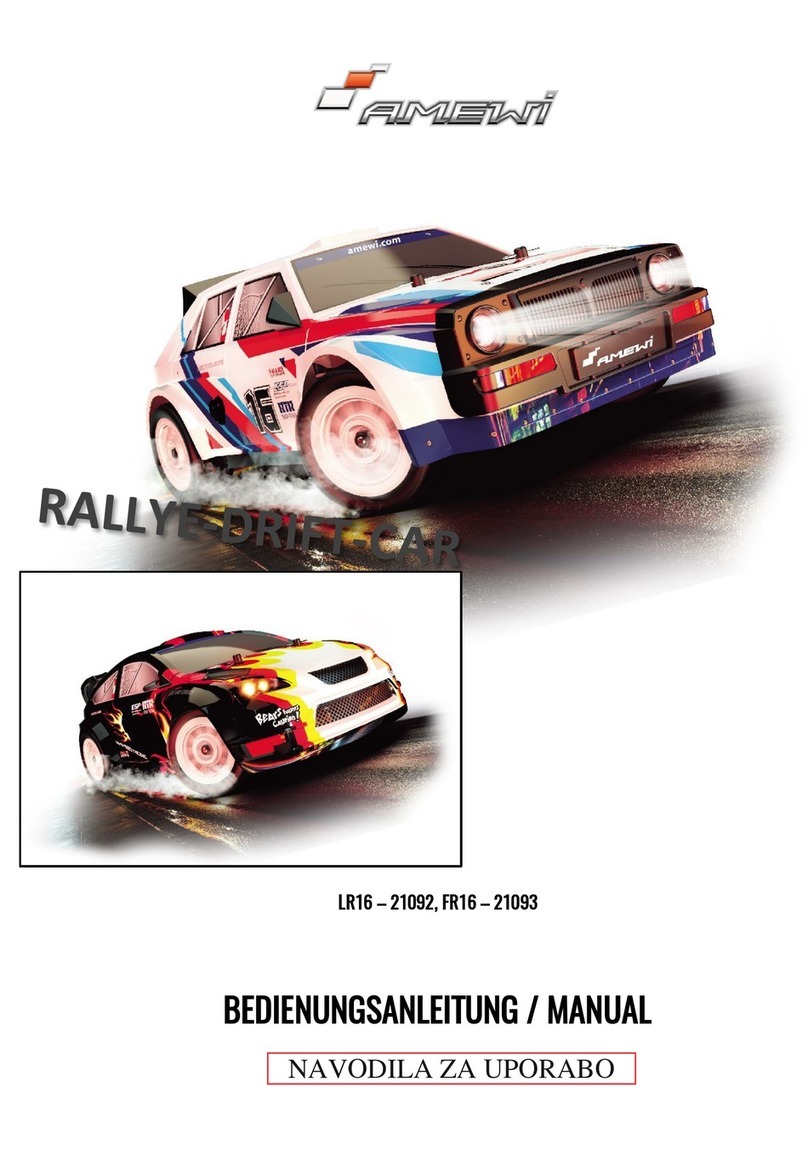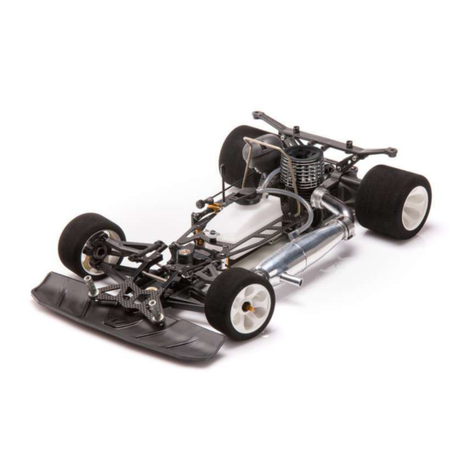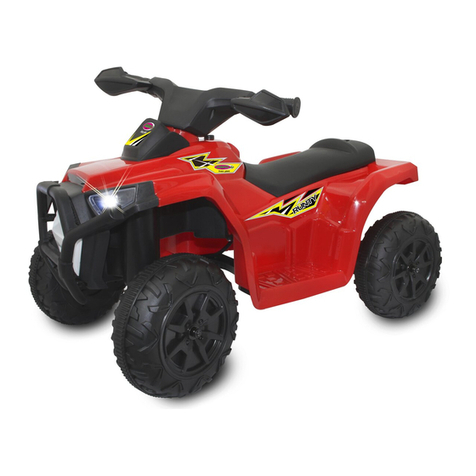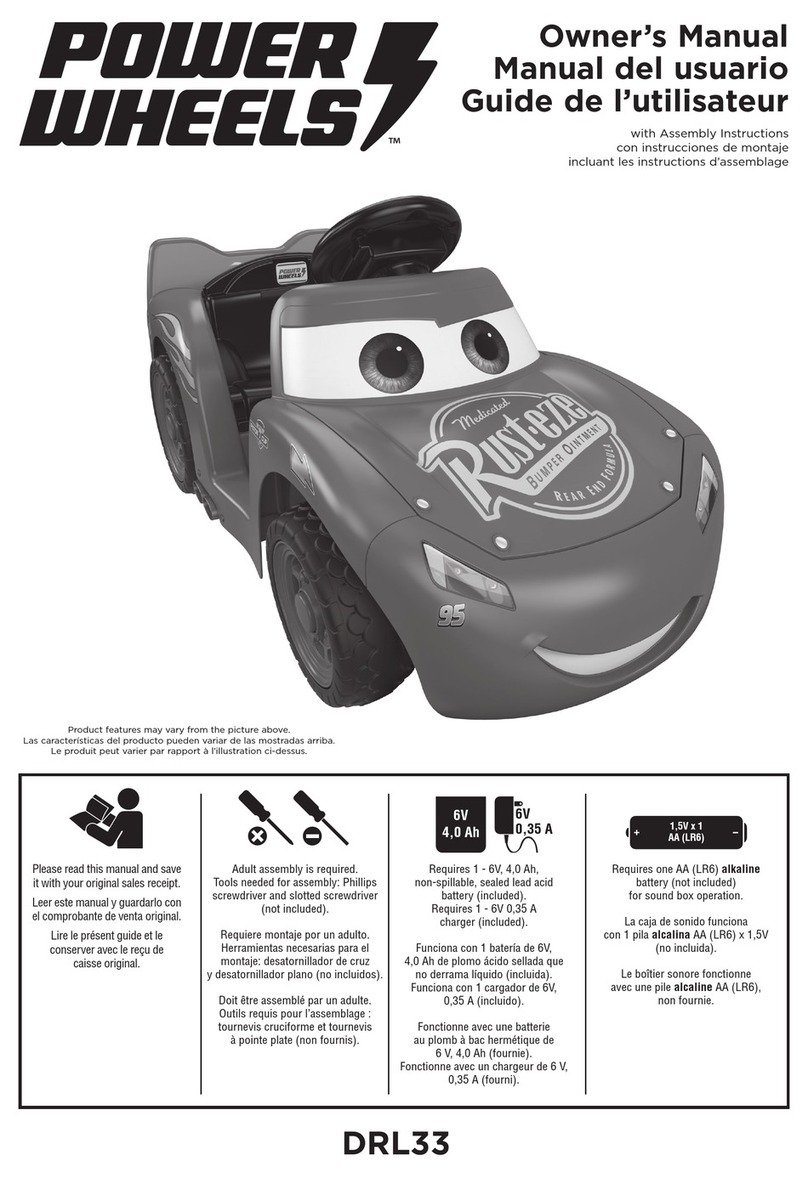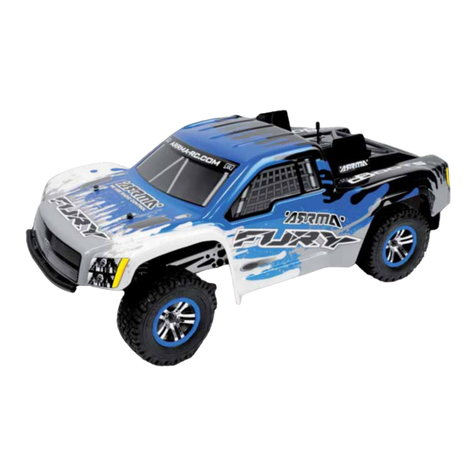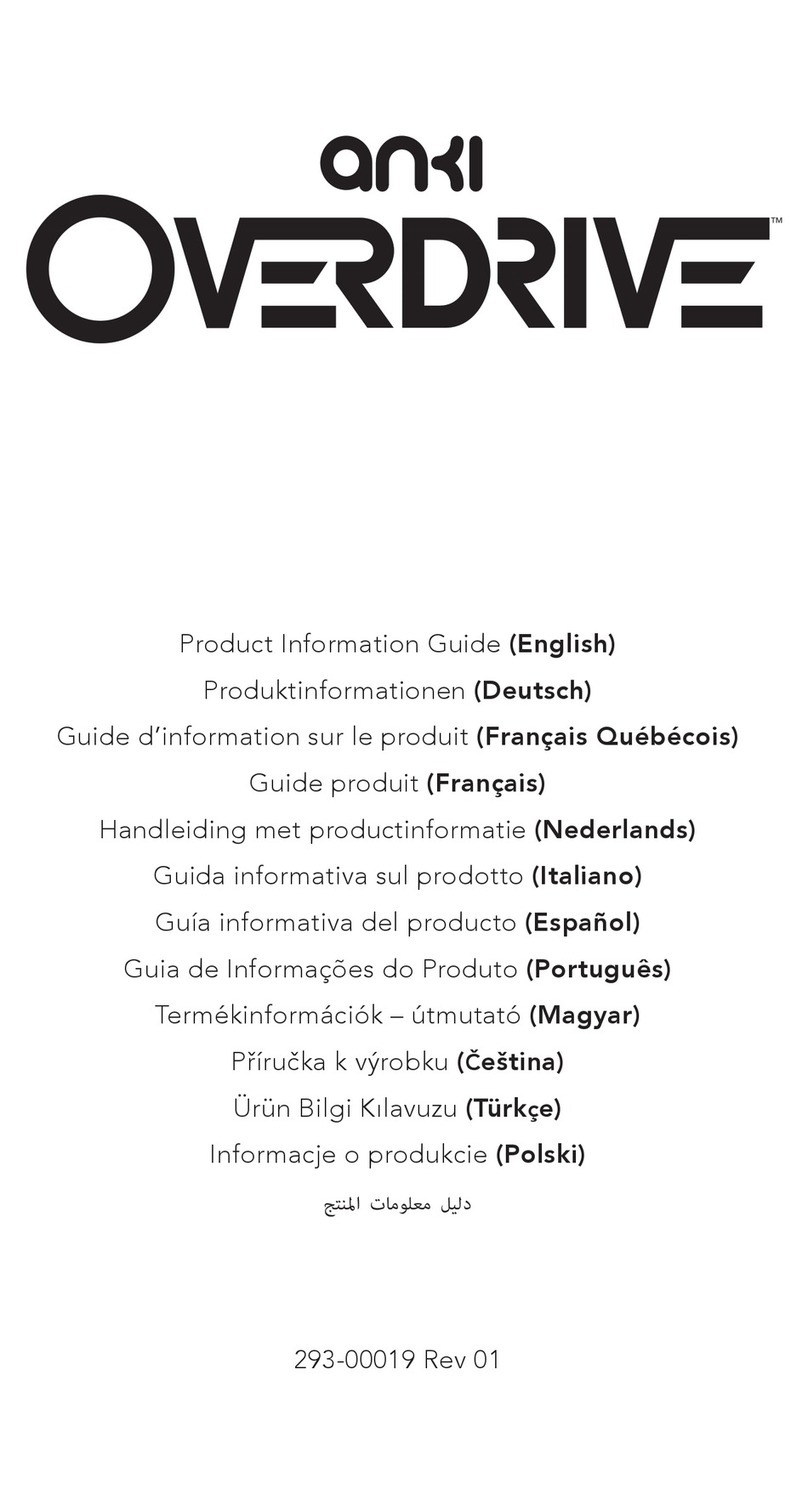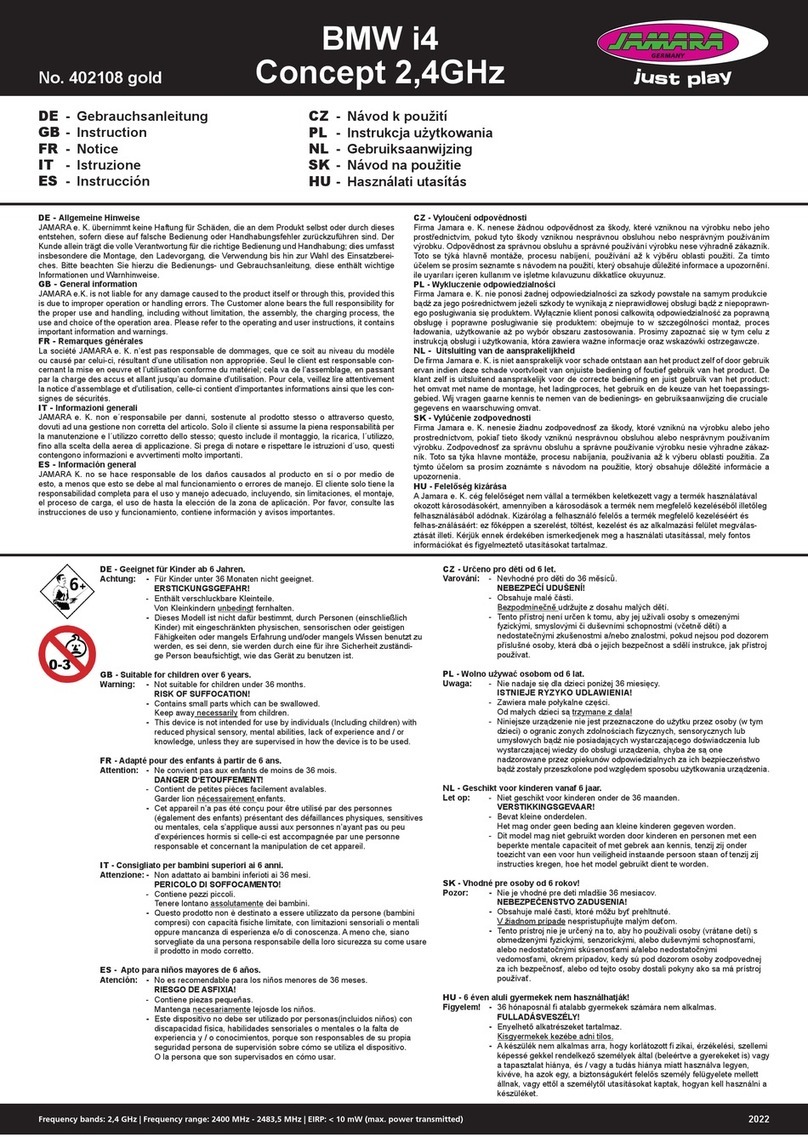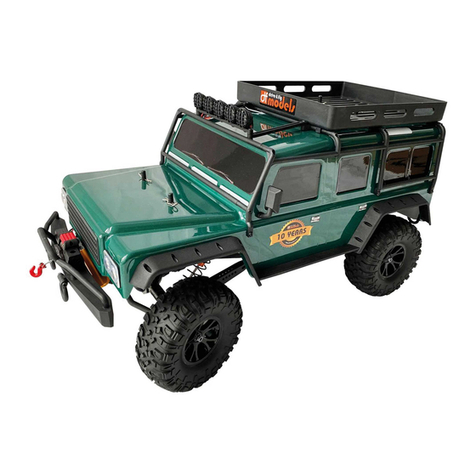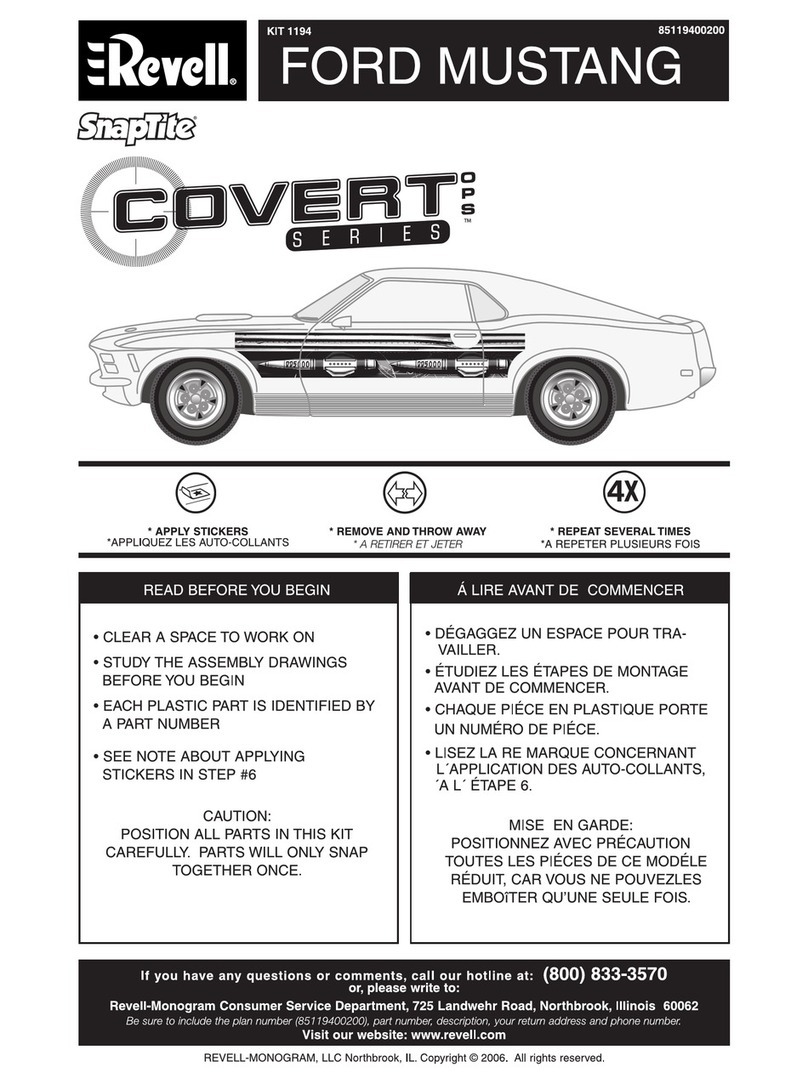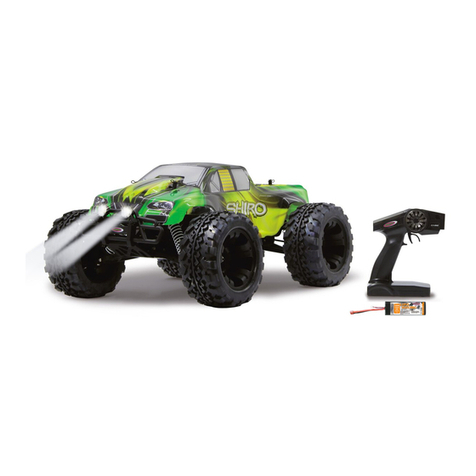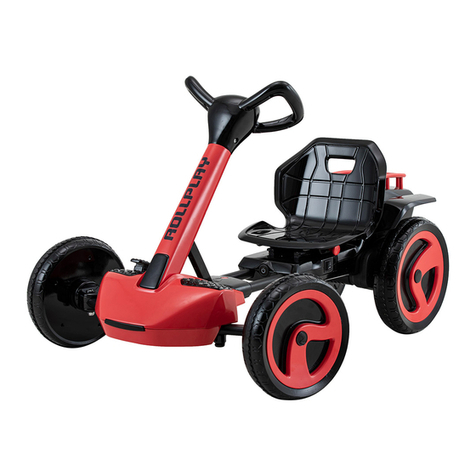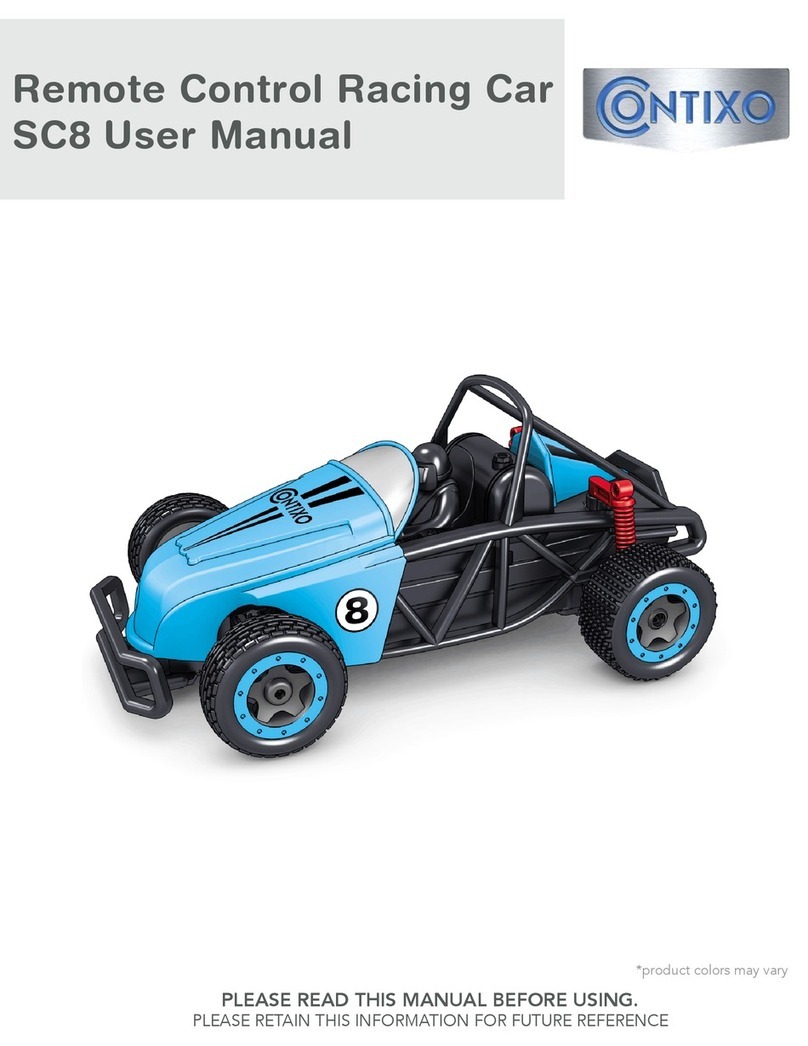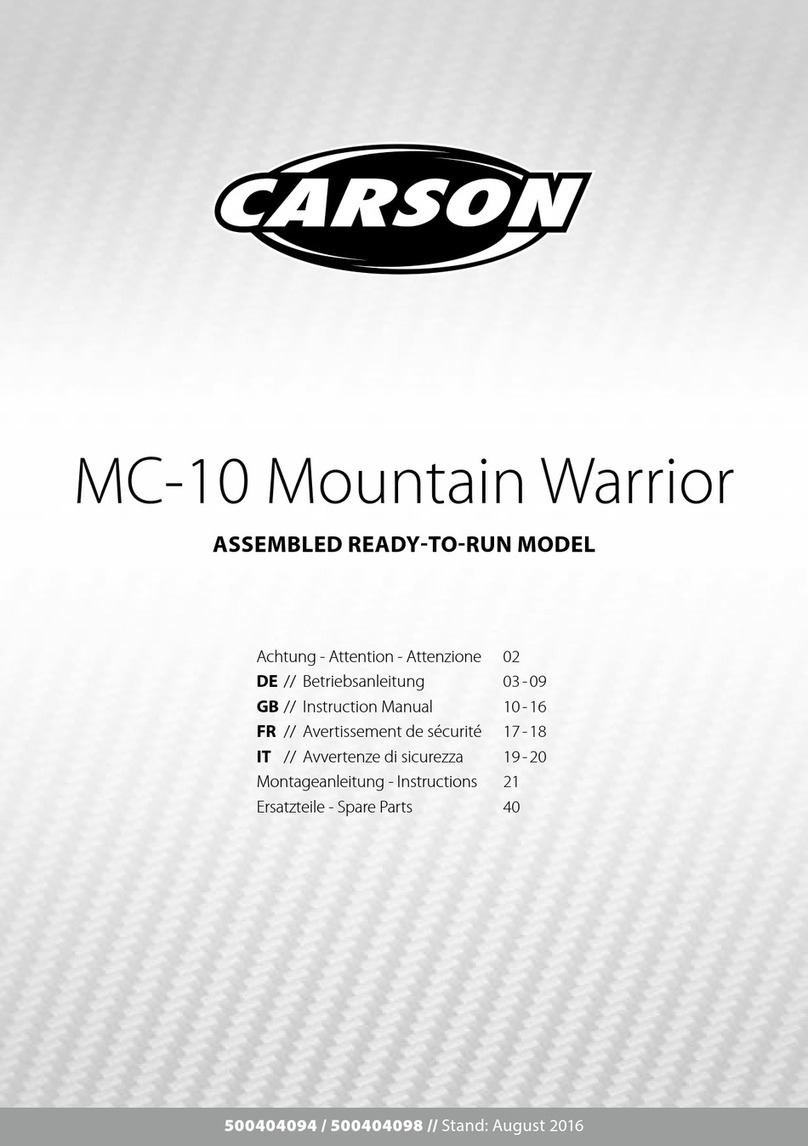Toro MB TX 2500 User manual

Operator’s Manual
MB TX 2500 Tracked Mud Buggy
Model—Serial Range
68138—406660000 and Up
68138G—405600000 and Up
68138HD—407100000 and Up
3451-705A Original Instructions (EN) *3451-705*A

Disclaimers and Regulatory Information
It is a violation of California Public Resource Code Section 4442 or 4443 to use or operate
the engine on any forest-covered, brush-covered, or grass-covered land unless the engine
is equipped with a spark arrester, as defined in Section 4442, maintained in effective
working order or the engine is constructed, equipped, and maintained for the prevention of
fire.
Because in some areas there are local, state, or federal regulations requiring that a spark
arrester be used on the engine of this machine, a spark arrester is available as an option. If
you require a spark arrester, contact your Authorized Service Dealer. Genuine Toro spark
arresters are approved by the USDA Forestry Service.
The enclosed engine owner's manual is supplied for information regarding the US
Environmental Protection Agency (EPA) and the California Emission Control Regulation of
emission systems, maintenance, and warranty. Replacements may be ordered through the
engine manufacturer.
WARNING
CALIFORNIA
Proposition 65
The engine exhaust from this product contains chemicals known to the State of California to
cause cancer, birth defects, or other reproductive harm.
Battery posts, terminals, and related accessories contain lead and lead compounds, chemicals
known to the State of California to cause cancer and reproductive harm. Wash hands after
handling.
Use of this product may cause exposure to chemicals known to the State of California to cause
cancer, birth defects, or other reproductive harm.
Table of Contents
Disclaimers and Regulatory Information.............................................................................................. 2
Chapter 1: Introduction........................................................................................................................ 1–1
Intended Use ..................................................................................................................................... 1–1
Getting Help....................................................................................................................................... 1–1
Manual Conventions........................................................................................................................ 1–2
Chapter 2: Safety.................................................................................................................................. 2–1
General Safety .................................................................................................................................. 2–1
Safety and Instructional Decals .................................................................................................... 2–1
Chapter 3: Product Overview ............................................................................................................ 3–1
Controls............................................................................................................................................... 3–1
Choke Control ............................................................................................................................... 3–1
Drive Controls................................................................................................................................ 3–2
Dump Controls .............................................................................................................................. 3–2
Key Switch ..................................................................................................................................... 3–2
Parking Brake................................................................................................................................ 3–3
© 2022—The Toro Company
8111 Lyndale Ave So
Bloomington, MN 55044
Contact us at www.Toro.com
Printed in the USA
All rights reserved

Throttle Control ............................................................................................................................. 3–3
Specifications .................................................................................................................................... 3–3
Attachments/Accessories............................................................................................................... 3–3
Chapter 4: Operation ........................................................................................................................... 4–1
Before Operation .............................................................................................................................. 4–1
Before Operation Safety ............................................................................................................. 4–1
Fuel .................................................................................................................................................. 4–2
Performing Daily Maintenance.................................................................................................. 4–3
During Operation .............................................................................................................................. 4–3
During Operation Safety ............................................................................................................. 4–3
Starting the Engine....................................................................................................................... 4–5
Shutting Off the Engine ............................................................................................................... 4–6
Operator Platform......................................................................................................................... 4–6
Operating the Hopper.................................................................................................................. 4–8
After Operation.................................................................................................................................. 4–8
After Operation Safety................................................................................................................. 4–8
Removing Debris from the Machine......................................................................................... 4–9
Lowering the Hopper without Power........................................................................................ 4–9
Raising the Hopper without Power......................................................................................... 4–10
Haul the Machine........................................................................................................................ 4–11
Chapter 5: Maintenance ..................................................................................................................... 5–1
Maintenance Safety ......................................................................................................................... 5–1
Recommended Maintenance Schedule...................................................................................... 5–2
Pre-Maintenance Procedures ....................................................................................................... 5–3
Moving a Non-Functional Machine........................................................................................... 5–3
Lifting the Machine ....................................................................................................................... 5–4
Releasing the Cushion for Rear Access ................................................................................. 5–4
Using the Cylinder Lock .............................................................................................................. 5–5
Lubrication.......................................................................................................................................... 5–6
Greasing the Machine ................................................................................................................. 5–6
Engine Maintenance........................................................................................................................ 5–7
Servicing the Air Cleaner ............................................................................................................ 5–7
Engine Oil Service........................................................................................................................ 5–8
Replacing the Spark Plug ......................................................................................................... 5–10
Cleaning the Blower Housing .................................................................................................. 5–10
Fuel System Maintenance............................................................................................................ 5–11
Replacing the Fuel Filter........................................................................................................... 5–11
Draining the Fuel Tank .............................................................................................................. 5–11
Removing the Fuel Tank ........................................................................................................... 5–12
Electrical System Maintenance................................................................................................... 5–12
Electrical System Safety........................................................................................................... 5–12
Battery Service............................................................................................................................ 5–12
Replacing a Fuse........................................................................................................................ 5–14
Drive System Maintenance .......................................................................................................... 5–15
Track Service............................................................................................................................... 5–15
Drive Belt ...................................................................................................................................... 5–19
Controls Maintenance ................................................................................................................... 5–21
Adjusting the Motion-Control Levers...................................................................................... 5–21
Brake Maintenance ........................................................................................................................ 5–22
Checking the Parking Brake .................................................................................................... 5–22
Adjusting the Parking Brake..................................................................................................... 5–22
Hydraulic System Maintenance .................................................................................................. 5–23
Hydraulic Drive System............................................................................................................. 5–23
3451-705A Page 3 Disclaimers and Regulatory Information:

Hydraulic Lift System................................................................................................................. 5–26
Checking the Hydraulic Lines .................................................................................................. 5–29
Cleaning............................................................................................................................................ 5–30
Removing Debris ........................................................................................................................ 5–30
Chapter 6: Storage............................................................................................................................... 6–1
Storage Safety .................................................................................................................................. 6–1
Preparing the Machine for Storage Over 30 Days.................................................................... 6–1
Chapter 7: Troubleshooting ............................................................................................................... 7–1
California Proposition 65 Warning Information
Disclaimers and Regulatory Information: Page 4 3451-705A

Chapter 1
Introduction
Intended Use
This machine is intended to be used by professional, hired operators in commercial
applications. This machine is a stable, reliable, and productive machine for carrying and
moving materials for any job site. It is primarily designed to move concrete, mortar, gravel,
dirt, or debris around job sites. Using this product for purposes other than its intended use
could prove dangerous to you and bystanders.
Read this information carefully to learn how to operate and maintain your product properly
and to avoid injury and product damage. You are responsible for operating the product
properly and safely.
Getting Help
G241847
Visit www.Toro.com for product safety and
operation training materials, accessory
information, help finding a dealer, or to register
your product.
Whenever you need service, genuine Toro parts,
or additional information, contact an Authorized
Service Dealer or Toro Customer Service and have
the model and serial numbers of your product
ready. These numbers are located on the serial
plate on your product . Write the numbers in the
space provided.
IMPORTANT
With your mobile device, you can scan the QR code on the serial number decal (if
equipped) to access warranty, parts, and other product information.
Model
Number:
Serial
Number:
3451-705A Page 1–1 Introduction

Manual Conventions
This manual identifies potential hazards and has safety messages identified by the safety-
alert symbol, which signals a hazard that may cause serious injury or death if you do not
follow the recommended precautions.
g000502
This manual uses 2 words to highlight information. Important calls attention to special
mechanical information and Note emphasizes general information worthy of special
attention.
Introduction: Manual Conventions Page 1–2 3451-705A

Chapter 2
Safety
General Safety
• Read and understand the contents of this Operator’s Manual before starting the engine.
• Do not operate the machine without all guards and other safety protective devices in
place and functioning properly on the machine.
• Park the machine on a level surface, lower the hopper, shut off the engine, and remove
the key (if applicable) before leaving the operating position.
• Keep your hands and feet away from moving parts. If possible, do not make adjustments
with the engine running.
Improperly using or maintaining the machine can result in injury. To reduce the potential for
injury, comply with these safety instructions and always pay attention to the safety-alert
symbol , which means Caution,Warning, or Danger—personal safety instruction.
Failure to comply with the instruction may result in personal injury or death.
Safety and Instructional Decals
Safety decals and instructions are easily visible to the operator and are located near any area
of potential danger. Replace any decal that is damaged or missing.
Decal Part: 115-4212
decal115-4212
Hydraulic-fluid level
Read the Operator’s Manual.
Warning—stay away from hot
surfaces.
Decal Part: 115-4858
decal115-4858
Force from above can cause
crushing of fingers, hands, toes, or feet
—install the cylinder lock.
3451-705A Page 2–1 Safety

Decal Part: 116-8775
decal116-8775
Read the Operator’s Manual.
Warning—fill to the bottom of the
filler neck; do not overfill the tank.
Decal Part: 125-4967
decal125-4967
Lift point
Decal Part: 132-8961
decal132-8961
Battery charging condition
Hour meter
Hopper is raising.
Hopper is lowering.
Hopper is down.
Hopper is lowering automatically.
Safety: Safety and Instructional Decals Page 2–2 3451-705A

Decal Part: 137-8899
decal137-8899
Read the Operator’s Manual.
Decal Part: 139-7219
decal139-7219
Parking brake—disengage
Parking brake—engate
Warning—read the Operator’s Manual; wear
hearing protection.
Warning—all operators should read the Operator’s
Manual and be trained before operating the
machine.
Warning—stay away from moving parts; keep all
guards and shields in place.
Asphyxiation hazard, poisonous fumes, or toxic
gases—do not run the engine in an enclosed
space.
Explosion hazard—shut off the engine; do not
expose to fire or open flames while fueling.
Tipping hazard—do not drive forward with the
hopper raised; do not drive down slopes with the
hopper raised; do not drive across slopes with the
hopper raised; drive slowly with the hopper
lowered.
Safety: Safety and Instructional Decals Page 2–4 3451-705A

Warning—keep bystanders away; look behind and
down when moving in reverse.
Warning—engage the parking brake, shut off the
engine, and remove the key before leaving the
operators position.
Move the handles in to operate.
Left traction controls
Raise the hopper.
Lower the hopper.
Right traction controls
Engine-speed control
3451-705A Page 2–5 Safety: Safety and Instructional Decals

Parking Brake
g009465
Engage
Disengage
Throttle Control
g357324
Specifications
Note: Specifications and design are subject to change without notice.
Width 90.2 cm (35.5 inches)
Length 268 cm (105.5 inches)
Height 121.2 cm (47.7 inches)
Weight 734 kg (1619 lb)
Hopper capacity 0.45 m3(16 cu.ft.)
Maximum load 1134 kg (2500 lb)
Discharge height 38.1 cm (15 inches)
Attachments/Accessories
A selection of Toro approved attachments and accessories is available for use with the
machine to enhance and expand its capabilities. Contact your Authorized Service Dealer or
authorized Toro distributor or go to www.Toro.com for a list of all approved attachments and
accessories.
To ensure optimum performance and continued safety certification of the machine, use only
genuine Toro replacement parts and accessories. Replacement parts and accessories
made by other manufacturers could be dangerous, and such use could void the product
warranty.
Product Overview: Specifications Page 3–3 3451-705A

Chapter 4
Operation
Before Operation
Before Operation Safety
General Safety
• Never allow children or untrained people to operate the machine. Local regulations may
restrict the age of the operator. The owner is responsible for training all operators and
mechanics.
• Become familiar with the safe operation of the equipment, operator controls, and safety
signs.
• Inspect the area where you will use the machine and remove all objects that could
interfere with the operation of the machine.
• Know and mark the locations of all utility lines.
• Check that the operator's presence controls, safety switches, and shields are attached
and functioning properly. Do not operate the machine unless they are functioning
properly.
• Locate the pinch point areas marked on the machine and keep your hands and feet away
from these areas.
• Do not carry passengers on the machine.
• Keep bystanders, especially children, out of the operating area. Ensure that the area is
clear of bystanders before operating the machine. Shut off the machine if a bystander
enters the area.
• Park the machine on a level surface, engage the parking brake, and shut off the engine.
Wait for all movement to stop and allow the machine to cool before adjusting, servicing,
cleaning, or storing the machine.
Fuel Safety
Use extreme care in handling fuel. It is flammable and its vapors are explosive.
• Extinguish all cigarettes, cigars, pipes, and other sources of ignition.
• Use only an approved container.
• Do not remove the fuel cap or fill the fuel tank while the engine is running or hot.
• Do not add or drain fuel in an enclosed space.
• Do not store the machine or fuel container where there is an open flame, spark, or pilot
light, such as on a water heater or other appliance.
3451-705A Page 4–1 Operation

Before Operation Safety (continued)
• If you spill fuel, do not attempt to start the engine; avoid creating any source of ignition
until the fuel vapors have dissipated.
• Do not fill containers inside a vehicle or on a truck or trailer bed with a plastic liner.
Always place containers on the ground, away from your vehicle before filling.
• Remove the equipment from the truck or trailer and refuel it while it is on the ground. If
this is not possible, then refuel from a portable container rather than a fuel-dispenser
nozzle.
• Keep the fuel-dispenser nozzle in contact with the rim of the fuel tank or container
opening at all times until fueling is complete. Do not use a nozzle-lock-open device.
• Do not operate the machine without the entire exhaust system in place and working
properly.
• Fuel is harmful or fatal if swallowed. Long-term exposure to vapors can cause serious
injury and illness.
– Avoid prolonged breathing of vapors.
– Keep your face away from the nozzle and fuel tank or conditioner opening.
– Keep fuel away from your eyes and skin.
Fuel
Fuel Specifications
Capacity 40.1 L (10.6 US gallons)
Type Unleaded gasoline
Minimum octane rating 87 (US) or 91 (research octane; outside the US)
Ethanol No more than 10% by volume
Methanol None
MTBE (methyl tertiary butyl ether) Less than 15% by volume
Oil Do not add to the fuel
Use only clean, fresh (no more than 30 days old), fuel from a reputable source.
IMPORTANT
To reduce starting problems, add fuel stabilizer/conditioner to fresh fuel as directed
by the fuel-stabilizer/conditioner manufacturer.
Operation: Before Operation Page 4–2 3451-705A

Fuel (continued)
Filling the Fuel Tank
g038312
1. Clean the area around the fuel-tank cap.
2. Remove the cap.
3. Add fuel until it is at the bottom of the filler
neck.
Note: Do not fill the fuel tank completely full.
The empty space in the tank allows the fuel to
expand.
4. Install the cap.
Performing Daily Maintenance
Before starting the machine each day, perform the Each Use/Daily procedures listed in the
Maintenance Schedule.
During Operation
During Operation Safety
General Safety
• The owner/user can prevent and is responsible for accidents that may cause personal
injury or property damage.
• Do not exceed the rated operating capacity, as the machine may become unstable,
which may result in loss of control.
• Wear appropriate clothing including eye protection, long pants, substantial slip-resistant
footwear, and hearing protection. Tie back long hair and do not wear loose clothing or
loose jewelry.
• Use your full attention while operating the machine. Do not engage in any activity that
causes distractions; otherwise, injury or property damage may occur.
• Do not operate the machine while ill, tired, or under the influence of alcohol or drugs.
• Operate the machine only in good light, keeping away from holes and hidden hazards.
• Ensure that all drives are in the NEUTRAL position before starting the engine. Start the
engine only from the operating position.
• Keep your hands and feet away from moving parts. If possible, do not make adjustments
with the engine running.
3451-705A Page 4–3 Operation: During Operation

During Operation Safety (continued)
• Never jerk the controls; use a steady motion.
• Use care when approaching blind corners, shrubs, trees, or other objects that may
obscure your vision.
• Slow down and use caution when making turns and crossing roads and sidewalks with
the machine. Always yield the right-of-way.
• Operate the engine only in well-ventilated areas. Exhaust gasses contain carbon
monoxide, which is lethal if inhaled.
• Never leave a running machine unattended.
• Operate the machine only in good visibility and appropriate weather conditions. Do not
operate the machine when there is the risk of lightning.
• Be aware of obstacles in close proximity to you. Failure to maintain adequate distance
from trees, walls, and other barriers may result in injury as the machine backs up during
operation if you are not attentive to the surroundings.
• Check for overhead clearance (i.e., electrical wires, branches, and doorways) before
driving under any objects and do not contact them.
• Do not overload the hopper and always keep the load level when operating the machine.
• Keep the hopper lowered and straight (if applicable) when moving, storing, loading,
transporting, and cleaning the machine.
• Do not modify the machine.
• Use care and slow down when you are operating the machine on a slippery surface.
• Always look down and behind you before moving the machine in reverse.
• If you feel uneasy operating the machine because the terrain is rough, slippery, or
unfamiliar, do not do it.
• Distribute loads evenly to improve the stability and control of the machine.
• Liquid loads shift, which can cause the machine to tip over.
Slope Safety
• Slopes are a major factor related to loss-of-control and tip-over accidents, which can
result in severe injury or death. You are responsible for safe slope operation. Operating
the machine on any slope requires extra caution. Before using the machine on a slope,
do the following:
– Review and understand the slope instructions in the manual and on the machine.
– Evaluate the site conditions of the day to determine if the slope is safe for machine
operation. Always use common sense and good judgment when performing this
evaluation. Changes in the terrain, such as moisture, can quickly affect the operation
of the machine on a slope.
• Do not raise the hopper on a slope. Raising the hopper on a slope affects the stability of
the machine. Keep the hopper in the lowered and straight position when on slopes.
• When operating on a slope, fold the platform up and walk behind the machine until it is
on flat ground.
Operation: During Operation Page 4–4 3451-705A

During Operation Safety (continued)
•Operate up and down slopes with the heavy end of the machine uphill. Weight
distribution changes with a full hopper. A full hopper makes the front of the machine the
heavy end, so walk behind the machine with the full hopper uphill.
• Identify hazards at the base of the slope. Do not operate the machine near drop-offs,
ditches, embankments, water or other hazards. The machine could suddenly roll over if a
wheel or track goes over the edge or the edge collapses. Keep a safe distance (twice the
width of the machine) between the machine and any hazard.
• Avoid starting, stopping, or turning the machine on a slope. Avoid making sudden
changes in speed or direction; turn slowly and gradually.
• Keep all movements on slopes slow and gradual. Do not make sudden changes in speed
or direction.
• Do not operate the machine under any conditions where traction, steering, or stability is
in question. Be aware that operating the machine on wet grass, across slopes or downhill
may cause the machine to lose traction. Loss of traction to the wheels or tracks may
result in sliding and a loss of braking and steering. The machine can slide even if the
wheels or tracks are stopped.
• Remove or mark obstacles such as ditches, holes, ruts, bumps, rocks or other hidden
hazards. Tall grass can hide obstacles. Uneven terrain could overturn the machine.
• If you lose control of the machine, step off and away from the direction of travel of the
machine.
Starting the Engine
G375752
1. Engage the parking brake .
2. Engage the choke .
Note: A warm or hot engine may not require
choking. You may need to repeat the starting
cycle when you start the engine for the first
time after you have filled a completely empty
fuel system with fuel.
Note: Let the machine stay at low idle for 3
minutes when starting the machine in a
temperature below 30°F.
3. Move the throttle between the FAST and SLOW
positions .
4. Turn the key switch to the START position .
3451-705A Page 4–5 Operation: During Operation

Starting the Engine (continued)
5. When the engine starts , disengage the choke .
IMPORTANT
Do not engage the starter for more than 5 seconds at a time. If the engine fails to start,
allow a 15-second cool-down period between attempts. Failure to follow these
instructions can burn out the starter.
Shutting Off the Engine
G375756
1. Move the throttle between the FAST and SLOW positions.
2. Engage the parking brake.
3. Turn the key switch to the OFF position and remove the key.
Operator Platform
You can use the machine with the platform in the up or down position.
WARNING
The operator platform is heavy and may cause injury when you raise or lower it.
Carefully lower or raise the operator platform, as suddenly dropping it could injure
you.
• Do not put your hands or fingers in the platform-pivot area when lowering or
raising the operator platform.
• Make sure that the platform is supported when you pull the latch pin out.
• Make sure that the latch secures the platform when folding it up. Push it tight
against the cushion for the latch pin to lock into place.
• Keep bystanders away from the machine when raising or lowering the platform.
Operate the machine with the platform up for the following conditions:
• Using the machine near drop-offs
• Using the machine in small areas where the machine is too large
• Areas with low-hanging branches or obstacles
Operation: During Operation Page 4–6 3451-705A
Other manuals for MB TX 2500
2
This manual suits for next models
3
Table of contents




